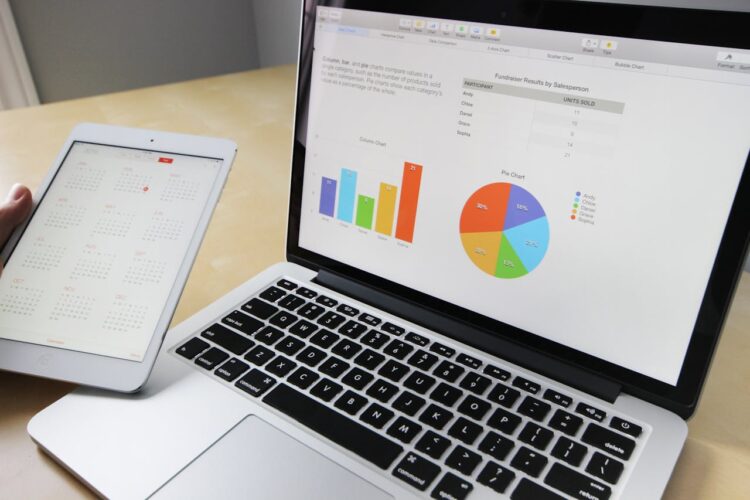
The B2B SaaS landscape is booming, but with growth comes fierce competition. To stand out, you need a razor-sharp marketing strategy. This guide dives into proven tactics to boost your B2B SaaS marketing game and drive real results.
Let’s face it – the tech world moves fast. What worked yesterday might not cut it today. That’s why staying on top of the latest B2B SaaS marketing trends is crucial. We’ll explore actionable strategies to help you attract more leads, close deals faster, and keep customers coming back for more.
Ready to take your B2B SaaS marketing to the next level? Let’s jump in and uncover the secrets to success in this dynamic field.
Understanding the B2B SaaS Marketing Landscape
The B2B SaaS market is exploding. With thousands of companies vying for attention, standing out is tough. But smart marketing can give you an edge.
B2B SaaS marketing differs from traditional B2B approaches. The focus is on ongoing value, not just closing a one-time sale. You’re selling a service, not a product. This means emphasizing long-term relationships and continuous customer success.
Key challenges in B2B SaaS marketing include:
- Long sales cycles
- Multiple decision makers
- High customer acquisition costs
- Intense competition
To overcome these hurdles, you need a multi-faceted strategy. This includes inbound marketing, content creation, SEO, and personalized outreach. The goal? To showcase your solution’s value proposition clearly and consistently.
Understanding your target audience is critical. B2B buyers are savvy and do extensive research before making decisions. They’re looking for solutions to specific pain points. Your marketing should speak directly to these needs.
Metrics matter in B2B SaaS marketing. Key performance indicators (KPIs) to track include:
- Customer Acquisition Cost (CAC)
- Customer Lifetime Value (CLV)
- Churn rate
- Monthly Recurring Revenue (MRR)
By keeping a close eye on these metrics, you can fine-tune your marketing efforts for maximum impact.
Remember, B2B SaaS marketing is a marathon, not a sprint. Success comes from consistent effort and continuous optimization. Stay focused on delivering value, and the results will follow.
Mastering SEO for B2B SaaS Companies
SEO is critical for B2B SaaS visibility. It drives organic traffic and qualified leads. Here’s how to optimize your SEO strategy:
- Conduct thorough keyword research, identify terms your target audience uses when searching for solutions. Focus on long-tail keywords with high intent. Tools like SEMrush or Ahrefs can help.
- Optimize your website structure, create a logical site hierarchy. Use clear, descriptive URLs. Implement internal linking to guide users and search engines through your content.
- Create high-quality, relevant content: Develop in-depth content around your target keywords. Answer common customer questions. Use headers, bullet points, and images to improve readability.
- Optimize technical SEO elements, ensure your site loads quickly. Make it mobile-friendly. Use schema markup to help search engines understand your content better.
- Build high-quality backlinks, Earn links from reputable industry sites. Guest post on relevant blogs. Participate in industry forums and discussions.
- Leverage local SEO If you serve specific geographic areas, optimize for local search. Create and verify your Google My Business listing.
- Monitor and analyze performance Regularly, check your rankings and organic traffic. Use tools like Google Analytics and Google Search Console to track progress.
- Stay up-to-date with algorithm changes Search algorithms evolve constantly. Keep informed about updates and adjust your strategy accordingly.
Consider partnering with a specialized B2B SaaS SEO agency like Nine Peaks for expert guidance. They can help you navigate the complexities of SEO and achieve better results faster. Remember, SEO is an ongoing process. It takes time to see results, but the long-term benefits are substantial. Stay patient and consistent in your efforts.
Maximizing ROI with Paid Advertising in B2B SaaS
Paid advertising can be a game-changer for B2B SaaS companies when executed strategically. Here’s how to make the most of your ad spend:
- Choose the right platforms Google Ads is often a top choice for B2B SaaS. LinkedIn Ads allow precise targeting of professionals. Test different platforms to see what works best for your audience.
- Focus on intent-based keywords For search ads, target keywords that indicate buying intent. Phrases like “best [your product category] software” or “[your product category] comparison” often convert well.
- Create compelling ad copy to highlight your unique value proposition. Address pain points directly. Use strong calls-to-action that encourage clicks.
- Develop targeted landing pages, don’t send ad traffic to your homepage. Create specific landing pages that match the ad’s message and offer. This improves conversion rates.
- Utilize retargeting Set up retargeting campaigns to re-engage visitors who’ve shown interest. Show them different messages based on the pages they’ve visited on your site.
- Leverage account-based marketing (ABM) Use platforms like LinkedIn to target specific companies or job titles. This allows for highly personalized messaging.
- Monitor and optimize regularly, keep a close eye on your ad performance. Adjust bids, ad copy, and targeting based on results. Don’t be afraid to pause underperforming ads.
- Track beyond the click, don’t just focus on click-through rates. Track conversions and customer acquisition costs. This gives you a true picture of ROI.
Remember, paid advertising should complement, not replace, your organic efforts. Use it strategically to boost visibility and drive quick results while building your long-term marketing foundation.
Leveraging Customer Success for B2B SaaS Growth
In B2B SaaS, customer success is more than just support – it’s a growth engine. Happy customers become advocates, driving referrals and reducing churn. Here’s how to leverage customer success for marketing:
- Invest in onboarding: A smooth start sets the tone for the entire customer relationship. Create a comprehensive onboarding process that gets users up to speed quickly.
- Provide ongoing education: Develop a knowledge base, video tutorials, and webinars. Help customers get maximum value from your product.
- Collect and act on feedback: Regularly survey customers. Use tools like NPS (Net Promoter Score) to gauge satisfaction. Act quickly on any issues raised.
- Create a customer community: Build a space for users to connect and share best practices. This could be a forum, Slack channel, or regular user group meetings.
- Showcase customer wins: Develop case studies highlighting customer success stories. Use these in your marketing materials to show real-world value.
- Implement a referral program: Happy customers are often willing to refer others. Create incentives for customers who bring in new business.
- Upsell and cross-sell strategically: Use customer usage data to identify opportunities for expansion. But always focus on providing additional value, not just increasing revenue.
- Turn customers into brand advocates: Identify your most enthusiastic users. Invite them to speak at events or contribute to your blog. Their authentic voices can be powerful marketing tools.
Remember, customer success is an ongoing process. Continuously look for ways to add value and improve the customer experience. This approach not only reduces churn but also turns your customers into a powerful marketing force.
Conclusion
The B2B SaaS marketing landscape evolves rapidly. Staying ahead of trends gives you a competitive edge. Here are key developments to watch.
AI-powered personalization Artificial Intelligence is revolutionizing marketing personalization. It allows for hyper-targeted content and recommendations at scale. Account-based marketing (ABM) ABM focuses marketing efforts on specific high-value accounts. It’s gaining traction for its ability to drive higher ROI. Video marketing dominance Video content is becoming increasingly important in B2B. From explainer videos to webinars, it’s a powerful tool for engagement.
Voice search optimization As voice assistants become more prevalent, optimizing for voice search is crucial. This means focusing on natural language and question-based keywords. Customer data platforms (CDPs) CDPs unify customer data from various sources, providing a single, comprehensive view of each customer. This enables more effective personalization and targeting. Interactive content tools like calculators, assessments, and interactive demos are becoming more popular. They provide value while capturing valuable data.
Sustainability focus B2B buyers are increasingly considering a company’s environmental and social impact. Highlighting sustainability efforts can be a differentiator. Privacy-first marketing With increasing data privacy regulations, marketers need to find ways to personalize experiences while respecting user privacy.
Stay informed about these trends and consider how they might apply to your business. But remember, not every trend will be right for you. Focus on those that align with your goals and audience needs.





